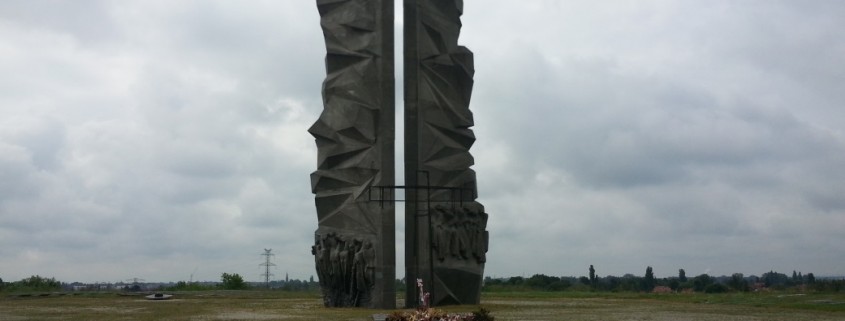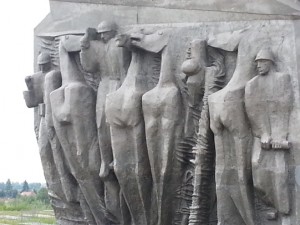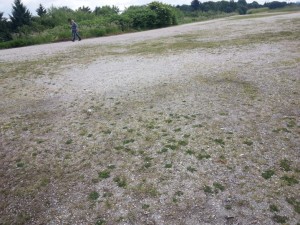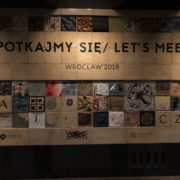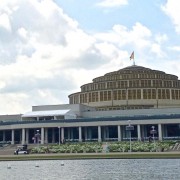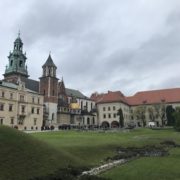The Polish Soldiers’ Monument
Within the first week of being in Wroclaw, we climbed a hill on the edges of the city which is topped by an imposing concrete structure and grave stones – the Polish Soldiers’ Monument. The place is symbolic of the history of Poland, a country that has been destroyed many a times. From disappearing off the map in the 18th century to ceasing to exist during World War II, Poland has had its fill of defeat. The Polish Soldiers’ Monument is a reminder of this history while at the same time it is a symbol of Wroclaw as a Polish city built on formerly German foundations. The monument embodies the rebirth of Polish Wroclaw and Poland as a country itself after World War II; it shows Poland’s willingness to fight for itself.
Construction of the Polish Soldiers’ Monument started in 1968 and was not completed until 1970. This monument was built to celebrate Polish presence in Wroclaw after World War II. From this location, as you look over Wroclaw, you can see the continual reconstruction of the city since the war, while at the same time imagining the destruction and death which would have surrounded you from this same vantage point some 80 years ago. Being able to see all of Wroclaw from this site makes you feel as though, no matter what happens through war, a dedicated city or country will fight to rebuild itself and make their presence known to the rest of the world.
The monument was built upon a large hill of rubble leftover from the siege of German Breslau by the Soviet Union. Standing on the remnants of German Breslau now topped with a Polish monument and graves we felt the continued presence of the German past in the Polish city of Wroclaw. The fragments of Breslau will always be here to remind us of the city’s toughest times.
The Polish Soldiers’ Monument was designed to look like the wings of the Polish Hussars, which were the main types of cavalry of the Polish military. The Hussars were famous for their huge “wings” which were made of a wooden frame that carried eagle, ostrich, swan, or goose feathers. They were attached to the saddle of the cavalry horses or, later on, to the back of the military armor. The most common theory of why the Hussars wore these wings was that they made a loud, clattering noise to make it seem as though the cavalry was much larger than in reality, frightening the enemy’s horses. It is also believed that they were made to defend the backs of the men against swords and lassos, or even worn to make their horses deaf to the wooden noise makers used by enemies such as the Ottoman and the Crimean Tatars. This made us realize just how creative the Polish military was and how simple it can be to “psyche out” the enemy.
At the monument, there is also a representation of Poland’s victories in other wars, such as the Polish-Lithuanian-Teutonic War. The shape of the swords lying next to the grave stones symbolize the Battle of Grunwald, fought on 15 July 1410.
By Samantha Krezmien, Madison Ball, and Taryn Mogavero

